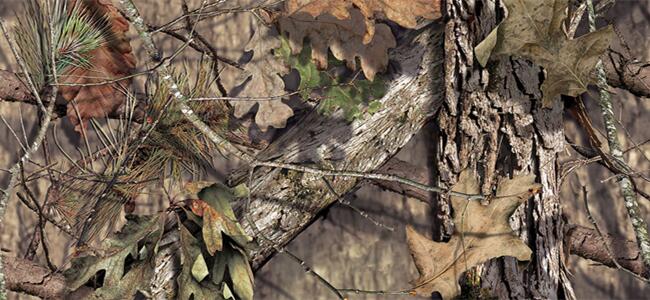Turkey hunting is a popular outdoor activity that requires careful planning, preparation, and equipment. One of the most important aspects of turkey hunting is choosing the right clothing to wear. In this article, we will discuss in detail how to dress for turkey hunting, including the importance of camouflage, clothing material, layering, accessories, and footwear.
Importance of Camouflage
The first and most important aspect of dressing for turkey hunting is camouflage. Turkeys have excellent eyesight and can easily spot anything that does not blend in with their surroundings. Therefore, it is essential to wear clothing that matches the terrain you will be hunting in. For example, if you are hunting in a wooded area, wear brown and green clothing to blend in with the trees and foliage. On the other hand, if you are hunting in an open field, wear tan and olive clothing to blend in with the grass and bushes.
It is important to note that different types of camo are designed for different types of environments. For example, Realtree camo is designed for heavily wooded areas, while Mossy Oak camo is designed for open fields. It is essential to choose the right camo for the environment you will be hunting in to increase your chances of successfully blending in with your surroundings.


Clothing Material
The material of your clothing is another important factor to consider when dressing for turkey hunting. It is essential to choose clothing made from breathable and lightweight materials that allow you to move freely. Additionally, choose materials that are quietand do not rustle when you move. This is important because turkeys have excellent hearing and can easily detect sounds that do not belong in their environment. Therefore, wearing clothing that does not make noise when you move can help you remain undetected.
One of the most popular materials for turkey hunting clothing is polyester. Polyester is lightweight, breathable, and does not make noise when you move. Additionally, it is often treated with a water-resistant coating, which can help keep you dry in wet conditions. Another popular material is cotton, which is comfortable and breathable but does not offer the same level of water resistance as polyester. It is essential to choose clothing made from materials that are appropriate for the weather conditions you will be hunting in.

Layering
Layering is an important aspect of dressing for turkey hunting. Turkey hunting often requires sitting still for extended periods, so it is important to dress in layers to stay warm. Additionally, layering allows you to remove or add clothing as the weather conditions change throughout the day. The three basic layers of clothing for turkey hunting are the base layer, the insulation layer, and the outer layer.
The base layer is the layer of clothing that is in direct contact with your skin. The base layer should be made from a moisture-wicking material that helps keep you dry and comfortable. This layer is important because it helps regulate your body temperature and prevents sweat from accumulating on your skin.
The insulation layer is the layer of clothing that provides warmth. This layer should bemade from a material that traps heat, such as fleece or wool. The insulation layer is essential for staying warm in cold weather conditions.
The outer layer is the layer of clothing that protects you from the elements. This layer should be water-resistant and windproof to keep you dry and warm. Additionally, the outer layer should be made from a material that is noiseless and does not rustle when you move.

Accessories
Accessories are an important aspect of dressing for turkey hunting. One of the most important accessories is a hunter orange vest or hat. Even though you will be wearing camouflage, it is essential to wear a hunter orange vest or hat to ensure that other hunters can see you. This is especially important during turkey hunting season, when there may be multiple hunters in the same area. Hunter orange is a bright and easily recognizable color that can help prevent accidents and ensure that all hunters can see each other.
Another important accessory is face paint or a mask to cover your face. Turkeys have excellent vision and can easily spot shiny or reflective surfaces, so avoid wearing anything that might give away your position. Face paint or a mask can help reduce glare and ensure that you remain hidden from the turkeys.
Additionally, consider wearing gloves to protect your hands from the cold weather and to keep them hidden from the turkeys. Gloves should be made from a material that is warm and quiet, such as fleece or wool.

Footwear
Footwear is an important aspect of dressing for turkey hunting. Turkeyhunting often involves walking through wet or muddy areas, so it is essential to wear comfortable and durable boots that can handle the terrain. Additionally, make sure your boots are waterproof and can keep your feet dry. Wet feet can lead to discomfort and can increase the risk of blisters and other foot injuries.
It is also important to choose boots that are comfortable and fit well. Turkey hunting often requires standing or walking for extended periods, so it is essential to wear boots that do not cause discomfort or pain. Additionally, choose boots with a good tread that can provide traction on slippery or uneven terrain.
Conclusion
In conclusion, dressing appropriately for turkey hunting is essential for both safety and effectiveness. When selecting clothing, choose camouflage that matches the terrain, wear comfortable and weather-appropriate clothing, and wear hunter orange to ensure that other hunters can see you. Additionally, use face paint or a mask to cover your face and reduce glare, and wear comfortable and durable boots that can handle the terrain. By following these tips, you can increase your chances of having a successful and safe turkey hunting trip. Remember to always follow hunting regulations and guidelines, obtain necessary licenses and permits, and hunt with a partner or group for added safety.





